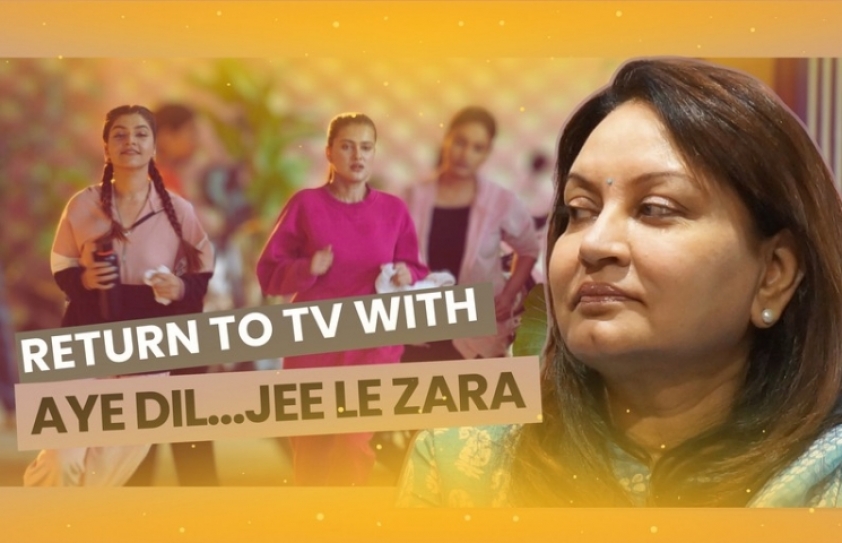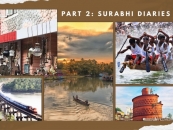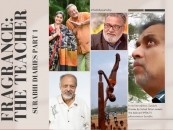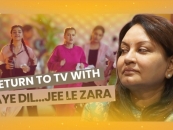
TELEVISION: RETURN TO TV WITH AYE DIL…JEE LE ZARA
by Shantanu Ray Chaudhuri April 12 2025, 12:00 am Estimated Reading Time: 8 mins, 31 secsGajra Kottary returns to TV with Aye Dil…Jee Le Zara, defying industry norms, embracing change, and reigniting the power of original storytelling in a transforming Indian television landscape. Shantanu Ray Chaudhuri speaks to her.
Renowned Indian writer Gajra Kottary, best known for iconic shows like Balika Vadhu and Astitva, makes a powerful return to Hindi television with Aye Dil…Jee Le Zara on Dangal TV. Based on her original Kannada-language hit Kogile, the show reflects the evolving tastes of Indian audiences across urban and rural markets. As regional content increasingly finds mainstream appeal, Gajra’s comeback signals renewed faith in rooted, emotion-driven storytelling. With a pan-India viewership in mind, the show exemplifies how original narratives can bridge the gap between Tier-1 cities and smaller towns, reshaping the future of Indian entertainment.
In 2023, celebrated, award-winning writer Gajra Kottary—known for Astitva and Balika Vadhu—shocked the television industry with a scathing critique of TV serial writing and her decision to quit the space altogether. A year and a half later, she returns with a new Hindi show Aye Dil…Jee Le Zara, based on her original regional hit Kogile on Udaya TV. In this candid conversation with Shantanu Ray Chaudhuri, Gajra shares what inspired her comeback, her current perspective on the television ecosystem, and why she still believes in the power of storytelling.
The Story Behind Aye Dil…Jee Le Zara
Shantanu Ray Chaudhuri: What is Aye Dil about? Can you tell us something about the show? Is this an original Gajra Kottary idea, or are you developing someone else’s story?
Gajra Kottary: I am extremely charged about Aye Dil…Jee Le Zara. It’s my first show after a hiatus of a year and a half from television writing—partly due to medical setbacks and also my general disillusionment with writing for TV. Television writing is definitely going through a very regressive phase across the board. As writers, we are being told to play it safe, with clichéd, inorganic drama being the norm for an ‘audience that largely belongs to a lower socio-economic strata’. This, according to me, underestimates the audience, and I do want to prove that wrong.
It feels great getting back to the wonderful ‘grind’, the adrenaline rush that comes with meeting one deadline after another in television writing, and I feel young again doing that. What’s awesome is that it’s an adaptation of my own original story that ran for almost three years and over 850 episodes on Udaya TV a few years ago. It was titled Kogile and is the story of a girl who discovers that she is adopted—and possibly dying—as she participates in a music reality show. She needs the help of the very parents who rejected her in order to survive. It’s a story full of relationship twists and turns, and I finally found a channel and a producer who have enough faith to do it in Hindi.
Many years ago, I read a true story in the Reader’s Digest about a child conceived only to save the life of a sibling, and the turmoil and challenges it brought to the lives of all the characters involved. It was one of those subjects that refused to leave my head in terms of the ‘what-ifs’ it triggered.
Surprisingly, it was considered too bold for the Hindi GEC space at the time, but I was convinced it was a good story. So I took it to the regional space almost ten years ago. These days, with many adaptations of shows and films in Hindi, it finally found favour with both my producer Smruti Shinde of SoBo Films and Dangal’s founder Manish Singhal. Dangal is an FTA (free-to-air) channel, which means I also enjoy the challenge of writing a story that appeals not just to an urban tier-1 audience, but also to tier-2 and 3 cities and towns. That’s something I learned while doing Balika Vadhu.
While the spine of my original story stays the same, I’ve made it pacier and more contemporary. The cast comprises proven good actors in the television space—Richa Rathod, Kinshuk Vaidya, Sumeet Sachdev, Suhasi Dhami, among others—and the director is Ashish Shrivastava.
Shantanu Ray Chaudhuri: What’s your involvement in this? Are you writing the broad format as you were for some recent shows, or are you involved with episodic development?
Gajra Kottary: In the last few years, I restricted myself to doing broad story arcs for my concepts. But this time, I’ve chosen to do the episodic story too. That gives me a better grip on where the show is headed. I’ll continue as long as my other assignment deadlines allow it, but if it becomes too tiring, I’ll give up the episodic work.
What Drew Her Back to Television Writing
Shantanu Ray Chaudhuri: Having done some of TV’s cult shows, what is it about Aye Dil that drew you in—especially after being away from TV writing for over a year? What’s the challenge that drives you to take this on?
Gajra Kottary: It’s actually easy to bask in past glory, but in my own mind, I am only as good as my last good work. I want to stay relevant in today’s times and I’m not ready to retire yet. I believe writing is one thing that gets better with age, as it reflects a lifetime of learned experiences that only get richer. Abhi mujh mein kahin baaki thodi si hai zindagi…aur uski bahut si kahaniyan.
Maybe one day the industry will oust me kicking and screaming. Until then, I’m feeling good writing. The grammar of today’s TV writing has changed—the pace needed in storytelling is breathless. But I’ll run while I can, if I can tell a good story along the way. And this is a good one, even if I say so myself.
Shantanu Ray Chaudhuri: About a year ago, you made a scathing attack on the way TV series were being written and designed. You withdrew from it. Has anything changed in the interim that brought you back? Do you think this show will handle writing and development differently?
Gajra Kottary: Yes, I did. I was embittered at that point in time, but with ADJLZ, the faith is returning, and I do hope it stays. On a more practical note, the OTT space too is taking its time to settle after some mergers happened and others fell through. Everyone in the know acknowledges that 2024 was a very tough year for film and OTT in general—though things are improving. I hope to crossover too for sure. For now, ADJLZ is a balm for my restless scriptwriter soul, and I’m enjoying living it up in the present, just as the title suggests.
Shantanu Ray Chaudhuri: What do you make of the current writing scenario for TV? Is OTT actually offering a platform to new voices—or even veterans like you? How do you see the space playing out?
Gajra Kottary: There’s a lot of fear among TV channel executives—and thus among writers—that TV viewership is declining compared to OTT, if not films. As a result, risk-taking in terms of themes and subjects has decreased. But some people are realizing that constantly repeating successful formulas is counterproductive, so experimentation has begun. Let’s see where that goes in the next few months. To answer the second part—until very recently, there was a distinct bias against TV writers writing for OTT. To some extent, it was logical—not because of a lack of craft (TV writers know how to stretch a story much better than film writers!), but because many TV writers have unfortunately lost touch with reality and logic after years of ‘factory writing’.
I’ve had it a little better, as I write books too, so I combine class and mass, HCF and LCM, so to speak. Now that OTT platforms have realized they need to attract mass audiences, they’re experimenting with longer series formats. I see myself fitting in there. I’m optimistic about lasting out a while longer—on TV, OTT, and even in film. Maybe the grass is greener beyond the world of TV.
.jpg)
Challenges Writers Face Today
Shantanu Ray Chaudhuri: There’s a lot of lament about writers in TV, OTT, and film not getting their due—be it credits or remuneration. As a veteran, how do you react to this? What are the challenges for writers wanting to break through? What is the SWA doing, and what would you advise as a workable solution?
Gajra Kottary: The lament is absolutely justified, although TV is largely fair in its credits and remuneration. However, the issue of royalties is very real and needs immediate redress across all mediums. Writers are really suffering, with nothing to fall back on in lean times, while their successful creations earn platforms loads of money. It’s very sad, and even for so-called ‘veterans’, it’s difficult to insist on fair contracts—so it must be absolutely horrible for newcomers struggling to break in.
The current managing committee of SWA—led by veterans like Anjum Rajabali, Vinod Ranganath, and Zaman Habib—is doing a superb job. They’re establishing a Copyright Society and working to convince government authorities of the need for royalties, just as it exists globally. It will take time, but it will happen.
SWA always advises writers not to sign one-sided contracts. They offer specialized legal help to navigate detailed paperwork. Plus, if writers face any injustice, SWA’s Disputes Redressal Committees step in. I’m optimistic—it’s a struggle the world over, but there has to be a rainbow in sight.







-173X130.jpg)
-173X130.jpg)




-173X130.jpg)